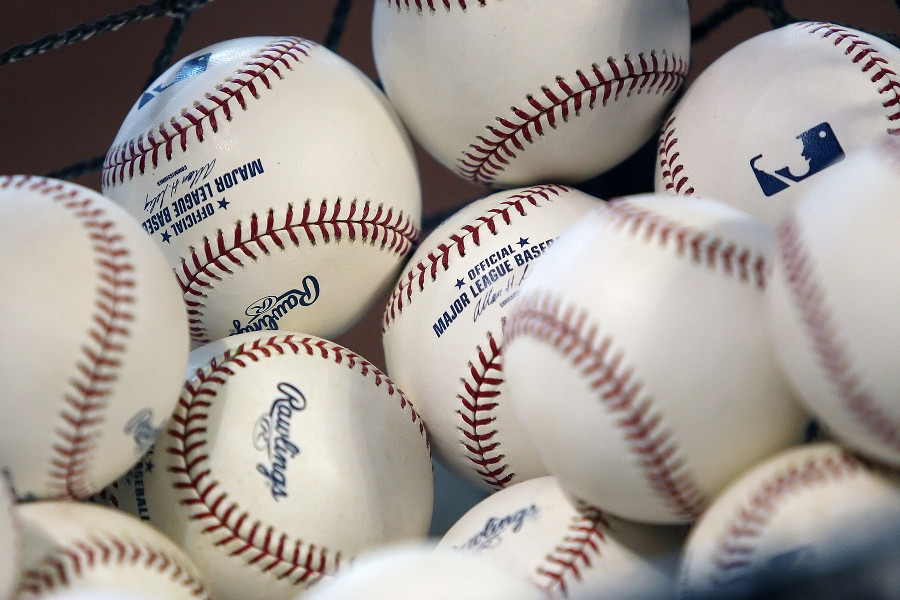With Revenue Sharing, Teams Now Have Few Ways To Spend


Baseball America correspondent Marc Topkin reported for the Tampa Bay Times today that the Major League Baseball Players Association has filed a grievance charging that the Rays, Athletics, Marlins and Pirates have failed to comply with rules about how they spend revenue sharing money they have received.
Topkin reported the MLBPA’s grievance covered the 2017 season and the current offseason. Teams are required to spend revenue sharing money they receive to improve the team’s on-field performance. The MLBPA wants an investigation to determine if those four teams have met those requirements.
In the 2007-2011 Collective Bargaining Agreement, clubs who received revenue sharing dollars were required to use them “in an effort to improve performance on the field.” But in the two subsequent CBAs (2012-2016 and 2017-2021), the parameters of that improvement became more specific. The past two CBAs include a clause that dictates revenue sharing recipients must use that money to improve performance on the field, much like the 2007-2011 CBA, but they also specify the money cannot be used for debt service or payments to any individuals other than on-field personnel or personnel related to player development. Teams are banned from “payments to entities that do not have a direct role in improving on-field performance.”
Basically, teams receiving revenue sharing are required to spend those millions of dollars to either improve the big league team or to bolster player development.
There’s only one problem. With the current CBA, teams no longer have a practical option of increasing spending on player development.
Teams can add an additional coach to each minor league team, bulk up the training, video or medical staffs or even add an additional minor league club, but there’s a limited amount that can be spent on upgrading the staffing or infrastructure in the minors.
And when it comes to spending on the draft or internationally, teams are operating within fixed and set limits because of the very same CBA that requires teams spend revenue sharing money to improve on-field performance.
Before the CBA changed draft rules in 2012, teams’ draft spending varied dramatically. Some teams would spend significantly beyond MLB’s bonus recommendations. Others wouldn’t even approach MLB’s recommended slotting amounts. And internationally, teams had no limits as to what they could spend. Some spent millions, others spend very little.
So, teams could truly shift money from the big league payroll to signing amateur players. It can be argued that is exactly what teams like the Royals and Pirates did. The Pirates spent more than $17 million, the Nationals spent $15 million and the Royals spent more than $14 million on their 2011 draft classes (the last year of unlimited draft spending). But beginning with the 2012 draft, teams were strictly limited in how much they could spend on their draft without losing draft picks, something no team has been willing to do.
No team has topped the Pirates’ or Nationals’ 2011 draft spending since.
It took a little longer, but the CBA has also squashed free spending on the international market.
Beginning in the 2012 CBA, there were penalties teams faced for exceeding limits internationally, but that didn’t keep the Red Sox from spending $63 million to sign Yoan Moncada. The Padres, one of the teams that receives revenue sharing, spent nearly $80 million to sign more than 50 players on the international market in 2016. In 2017, the 30 teams were limited to spending $153 million total on the entire international market.
Nowadays, teams’ draft spending is largely set by their draft slots, and they are given a fixed amount to spend internationally. Teams can add to their allotment through trades, but even then, no team can spend more than $8.625 million internationally. That is a hard fixed limit.
Back when the revenue sharing requirements were put into place in the CBA, teams could make a decision to shift money from major league spending to spending on acquiring amateur talent. In 2018, with each team strictly limited by the CBA in how much they can spend, teams no longer realistically have that option.

Comments are closed.